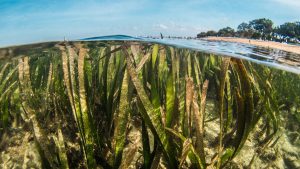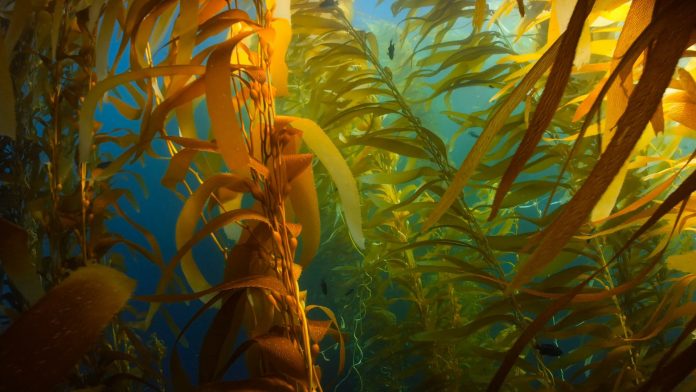Christopher Pearce, Principal Marine Geoscientist at the National Oceanography Centre, discusses the potential, and challenges, of using ocean-based carbon dioxide removal techniques to reduce greenhouse gas emissions.
Net zero targets and emission reduction systems have become household terms in our efforts to minimise the extent of future global warming. Many will be aware that limiting the temperature increase to less than 2˚C above pre-industrial levels (the Paris Agreement goal) is only possible with significant and rapid drops in the rate of greenhouse gas emissions.
However, you may not realise that reducing our emissions alone is not going to be enough to enable us to meet those vital targets.
An urgent need to upscale carbon dioxide removal
All of the IPCC’s most recent climate projection scenarios that achieved the Paris Agreement temperature goal factored in the active removal of hundreds of billions of tonnes of carbon dioxide (CO2) from the atmosphere over the coming century.1
These ‘carbon dioxide removal’ (CDR) processes extract atmospheric carbon and store it in geological, terrestrial or marine reservoirs and products via the implementation, or enhancement, of biological or chemical techniques.2
A wide variety of CDR approaches have been proposed, including methods such as Direct Air Carbon Capture and Storage (DACCS), Bioenergy with Carbon Capture and Storage (BECCS), Biochar and Enhanced Weathering.
However, very few of these techniques are currently being implemented at climatically significant scales, resulting in a significant gap in the extent of CDR being achieved and the amount needed to keep global warming within acceptable limits.3
The ocean is a highly effective carbon sink
The ocean has huge potential to help meet global carbon dioxide removal targets as it covers 70% of Earth’s surface and has already absorbed approximately 25% of all human CO2 emissions since the industrial revolution.

Small enhancements in the rate of CO2 incorporation into this vast carbon reservoir could translate into the enormous drawdown of atmospheric CO2, with some approaches hypothesised to have the capability of removing over a billion tonnes of atmospheric CO2 per year.1,4
Improving our understanding of the true sequestration efficiency of these ocean-based (o)CDR techniques, as well as their environmental co-benefits or impacts, is consequently the subject of significant scientific and commercial interest.
The CO2 absorption power of seawater
One of the most promising oCDR techniques is Ocean Alkalinity Enhancement (OAE); an abiotic approach that seeks to increase the CO2 absorption potential of seawater by increasing its pH.
The inferred efficacy, scalability, and permanence of OAE coupled with flexibility in how the alkalinity is generated offers advantages over some other ocean-based carbon dioxide removal methods,5 with its potential for offsetting the negative impacts of ocean acidification.
However, little is currently known about the impacts of enhanced alkalinity on marine ecosystems and environments, and our ability to appropriately monitor such effects within the open ocean is yet to be proven.6
Small-scale field-trials and experiments being conducted by companies such as Planetary and Vesta, and through research programmes such as OceanNETS and CDRmare, are helping to advance our understanding of OAE implementation and its impacts, but many uncertainties persist regarding the sequestration effectiveness, biogeochemical and ecological consequences, and observation capabilities of this approach.
Marine afforestation and deposition
Another archetypal ocean-based carbon dioxide removal technique involves increasing the rate of macroalgae production and burial.
Seaweeds such as Kelp and Sargassum absorb dissolved CO2 from seawater via photosynthesis during growth, and sinking them in deep sea environments may prevent, or significantly delay, the return of carbon back into the exchangeable surface reservoirs.
The cultivation of seaweed is already a multi-billion dollar industry for animal and human food in addition to biofuels,4 and companies including Running Tide, Seafields, Seaweed Generation, and Kelp Blue are currently looking at the potential to expand this sector for application as an ocean-based carbon dioxide removal method.
However, as with OAE, a number of knowledge gaps need to be addressed before the technique can be expanded to the scale required to achieve significant levels of CO2 drawdown, with research priorities including improving our understanding of the sequestration efficiency and nutrient requirements for enhancing macroalgae growth,7,8 as well as evaluating the environmental impacts and permeance of the carbon deposited in deep ocean settings.
The need for regulatory guidelines and codes of conduct
Other proposed ocean-based carbon dioxide removal techniques include nutrient fertilisation, artificial upwelling, and downwelling, ecosystem recovery, coastal blue carbon management, and electrochemical approaches coupled with carbon capture and storage.1,2,4,5
All these approaches have specific development needs and gaps that require resolution prior to implementation at scale, as highlighted by Ocean Visions’ oCDR roadmaps and in the National Academies of Sciences, Engineering and Medicine oCDR Research Strategy.4
The oCDR sector as a whole also faces a number of legal, ethical and political knowledge gaps that are likely to significantly influence the true implementation potential and scalability of any technique.

For example, clear regulatory frameworks are required within both national and international governance structures to help minimise environmental risks and provide confidence to policymakers and investors. Codes of conduct are needed to ensure all communities and stakeholders are engaged in the advancement of ocean-based carbon dioxide removal through appropriate research and development activities.9
Whilst such guidelines are starting to be developed by the international community,10,11 further coordination, research, and engagement is required to ensure that oCDR develops in an inclusive, representative and just manner using evidence-based assessments.12
Careful stewardship, close collaboration and further research are essential for advancing oCDR
Improving our understanding of if, where and how ocean-based carbon dioxide removal strategies can be implemented at scale requires interdisciplinary programmes that unite expertise from multiple sectors to drive mutually compatible advances.
The recently initiated Strategies for the Evaluation and Assessment Of Ocean based Carbon Dioxide Removal (SEAO2-CDR) project combines leading marine, climate policy, economic, and political science research institutions with an international ocean business alliance to develop the mechanisms, tools and guidelines needed for oCDR techniques to be deployed in a responsible and transparent manner.
The Horizon Europe-funded project will be delivered through three core themes that:
- Characterise the key system boundaries, processes, material, and energy flows of different ocean-based carbon dioxide removal approaches and establish their temporal and spatial monitoring requirements and mechanisms;
- Establish social, regulatory, political, economic, and ethical frameworks required to support oCDR uptake at scale; and
- Enhance our understanding of realistic implementation policies and pathways via an integrated assessment of system-level effects.
We know that meeting global climatic targets and commitments over the coming decades will require the implementation and upscaling a portfolio of CDR approaches. The ocean is poised to play an essential role contributing to these CDR efforts, but careful stewardship, close collaboration and further research are required to ensure that, where appropriate, ocean-based carbon dioxide removal techniques can be deployed in an environmentally safe, socially acceptable and economically viable manner.
Christopher Pearce is the Scientific and Technical lead of the SEAO2-CDR project, which has received funding from the European Union’s Horizon Europe research and innovation programme under grant agreement No. 101081362.









